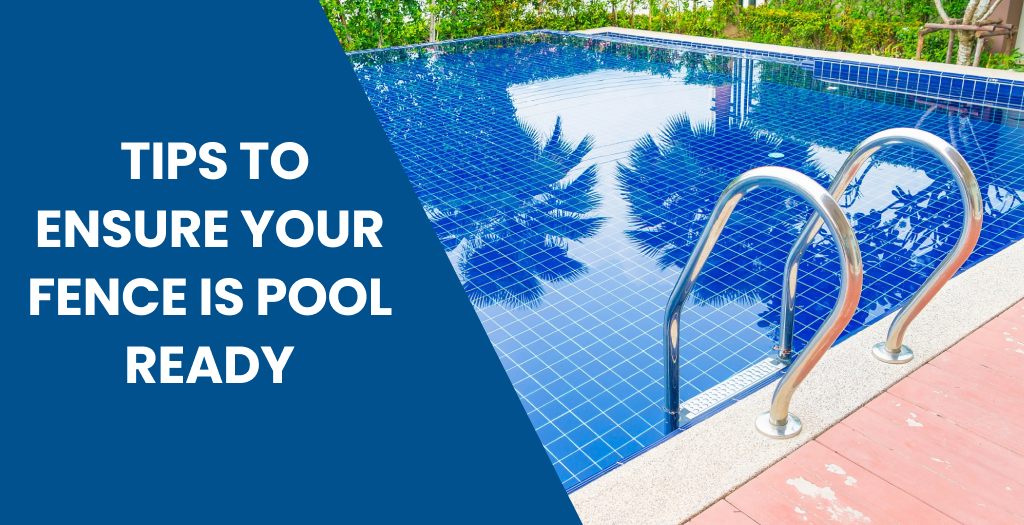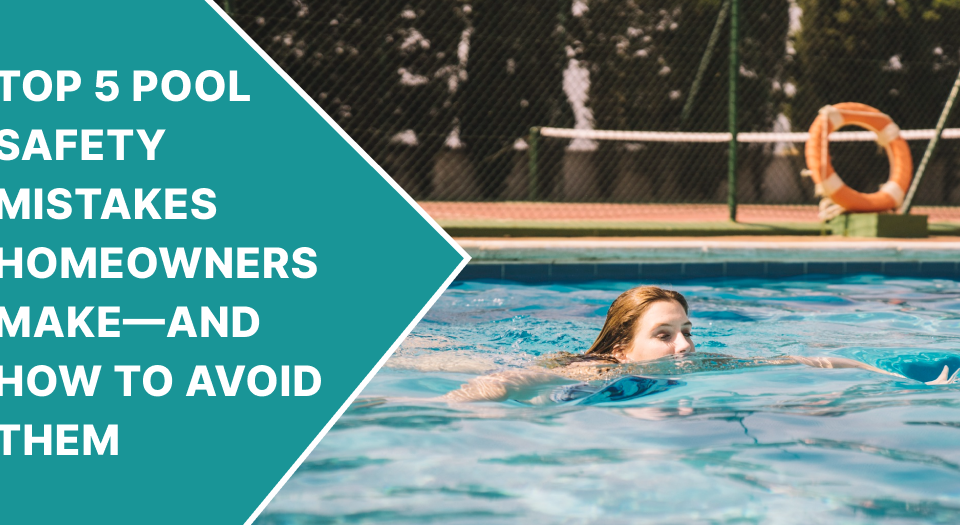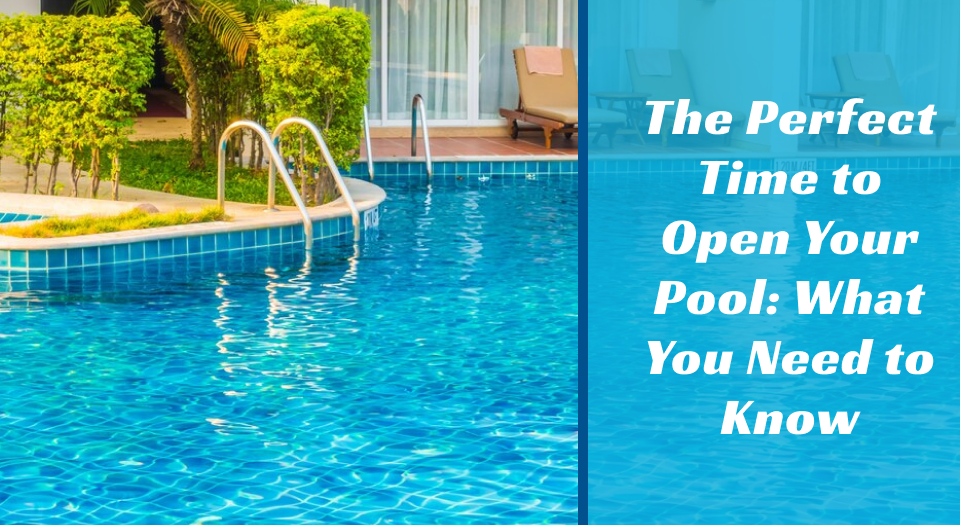
The Perfect Time to Open Your Pool : What You Need to Know
April 30, 2025
Top 5 Pool Safety Mistakes Homeowners Make—and How to Avoid Them
May 28, 2025If you have a pool—or are planning to install one—you probably already know that safety is just as important as aesthetics. One of the most essential safety features for any backyard pool is a secure, code-compliant fence. A properly installed fence not only keeps children and pets safe, but also gives you peace of mind.
But what does it really mean for a fence to be “pool ready”? It goes beyond just having a barrier in place. Your fence should meet legal requirements, function as intended, and be durable enough to withstand both the elements and the curiosity of little ones.
Whether you’re upgrading an existing fence or installing a brand-new one, this guide will walk you through practical tips to ensure your fence is fully pool ready. While we’re not selling fences ourselves, we’re happy to highlight the trusted work of Life Saver Pool Fence—a company well-known for its commitment to child pool safety.
1. Know Your Local Pool Safety Codes
The first and most important step in making sure your fence is pool ready is understanding your local building and safety codes. Pool fence laws vary by state and even by city or county. These laws typically cover:
- Minimum fence height (usually 48 inches or higher)
- Distance between vertical bars or slats
- Gate requirements (such as self-closing and self-latching mechanisms)
- The direction of the gate opening (generally, gates should open away from the pool)
- Maximum gap between the bottom of the fence and the ground
Skipping this step can lead to costly fines, failed inspections, and worse—safety risks. Before you start planning your pool fence, check your municipality’s building department or speak with a licensed contractor who is familiar with your area’s regulations.
2. Prioritize a Self-Closing, Self-Latching Gate
A pool fence is only as strong as its weakest point—and that weak point is often the gate.
Children are naturally curious, and a gate that doesn’t close or latch on its own can be a real hazard. That’s why one of the most critical features of a pool fence is a self-closing, self-latching gate. These gates automatically close behind you and latch securely, reducing the chances of accidental entry.
Look for gates with:
- Latches placed at least 54 inches above the ground (out of reach of small children)
- Magnetic or mechanical latching systems that are reliable and easy to use
- Hardware that resists rust and corrosion over time
When considering a brand like Life Saver Pool Fence, you’re looking at products that consistently meet these criteria, combining practical design with top-tier safety.
3. Choose the Right Fence Material
Not all fences are created equal—especially when it comes to pool safety. Materials matter, both in terms of durability and visibility.
Here are some common options:
- Mesh Pool Fences: Lightweight, strong, and see-through, mesh fences have become a popular option for pool owners. They’re especially effective for families with young children because they offer high visibility and are difficult for kids to climb.
- Wood Fences: While sturdy, wood can obstruct visibility and may require more maintenance due to rot, warping, or termites.
- Aluminum or Iron Fences: These can be beautiful and durable, but make sure the spacing between bars is narrow enough to prevent children from squeezing through.
A mesh fence from a trusted provider like Life Saver Pool Fence delivers a combination of strength, aesthetics, and functionality. Plus, these fences are often removable, giving you the flexibility to open up your yard when it’s safe to do so.
4. Inspect for Weak Points and Gaps
Even the best fence in the world can fail if it’s not installed properly or regularly maintained. Take time to inspect your fence for:
- Gaps underneath where a child or pet could crawl through
- Loose or wobbly posts
- Broken latches or hinges
- Rust or wear that could compromise structural integrity
If your fence is older or has weathered a few harsh seasons, it might be time for a professional inspection. Companies like Life Saver offer evaluations and upgrades to ensure your current setup still meets modern safety standards.
5. Keep Furniture and Climbable Items Away from the Fence
This is a tip that’s often overlooked but incredibly important: keep objects like chairs, planters, or pool toys away from the fence line. Children are resourceful and may use nearby items to climb over the barrier.
Here are some common culprits to watch for:
- Patio furniture
- Pool floats stacked up
- Storage bins or deck boxes
- Grills or garden decorations
Keep a clear zone of at least 3 feet on both sides of your fence. Not only does this reduce climbing hazards, but it also makes fence inspections and maintenance much easier.
6. Consider Alarms and Additional Layers of Protection
While a fence is your first line of defense, it’s smart to include multiple layers of protection around your pool. Here are a few enhancements to consider:
- Gate Alarms: These notify you when a gate has been opened—especially useful if your kids have gotten more independent.
- Pool Alarms: These float in the water and sound off if something or someone enters unexpectedly.
- Door Alarms: If your home leads directly to the pool area, alarms on those doors are essential.
Life Saver Pool Fence often recommends a multi-layered approach to pool safety, not as a scare tactic, but because real-life situations often involve a combination of oversights. The more barriers you put in place, the less likely a tragedy becomes.
7. Involve the Whole Family in Pool Safety
A fence is a fantastic tool—but it’s not a babysitter. Teaching everyone in your household about pool safety ensures the fence is respected and used properly.
Simple reminders include:
- Always closing the gate behind you
- Never propping the gate open
- Telling an adult when something seems wrong with the fence
You can even turn it into a “safety champion” system for kids, where they earn praise for reminding others to shut the gate or pick up pool toys. Building awareness helps create a culture of safety that goes beyond just physical barriers.
8. Go with a Reputable Installer
This isn’t the time to cut corners. A poorly installed fence might meet technical requirements on paper but fail in real-world conditions. Working with a reputable installer ensures your fence is both compliant and truly secure.
When considering installation services, ask questions like:
- Is the company licensed and insured?
- How long have they been installing pool fences?
- What kind of warranty do they offer?
Life Saver Pool Fence, for instance, has a track record of high-quality installations performed by experienced professionals who specialize in child safety. Choosing a trusted brand can make a big difference in your overall confidence.
Conclusion
Ensuring your fence is pool ready isn’t just about checking a few boxes—it’s about protecting your loved ones. A well-thought-out fence serves as a physical and psychological barrier, offering peace of mind while still allowing you to enjoy your backyard space.
By understanding local codes, prioritizing proper materials, and keeping up with maintenance and safety practices, you’re setting up your pool area for long-term success. And when you work with reputable names like Life Saver Pool Fence, you’re taking one of the most important steps in creating a safe and secure environment for your family.
Remember, pool safety is not just about what’s required—it’s about doing what’s right.




